The British Army’s drive to modernise its air defences is making steady progress, with a medium-range capability for warfighting now expected to achieve Initial Operating Capability by July 2026, the Ministry of Defence has confirmed.
In response to a written question from Conservative MP James Cartlidge, Defence Minister Maria Eagle stated: “The Land Ground Based Air Defence (GBAD) programme strives to modernise Defence’s ground-based air defence capabilities in the face of rapidly developing threats and is a high priority for the Army.”
At the core of the modernisation effort is the creation of an “integrated layered air defence system” capable of countering everything from small drones to fast jets. The system will include “Small Air Targets, Short and Medium Range Air Defence” solutions.
Eagle confirmed that, as part of the July 2026 target, the programme will deliver “two Surface-to-Air Missile Operations Centres, and two enhanced Wireless Enabled Network sets.”
In terms of kinetic capability, the programme has a major procurement milestone on the horizon: “By June 2027, a further 800 Thales (Belfast) lightweight multi role missiles (LMM) will also be procured.” These versatile Starstreak-derived missiles can engage a range of airborne threats and will form a key component of the updated system.
Meanwhile, the programme has already begun to deliver “Counter-Uncrewed Aerial Systems (C-UAS) capability for dismounted close combat forces”—though Minister Eagle noted this is “albeit in relatively low numbers.”
Future efforts will shift toward higher-level capabilities, with a focus on “UAS detect and non-kinetic systems, and upgrades to vehicle mounted weapon systems to enable them to engage UAS.”


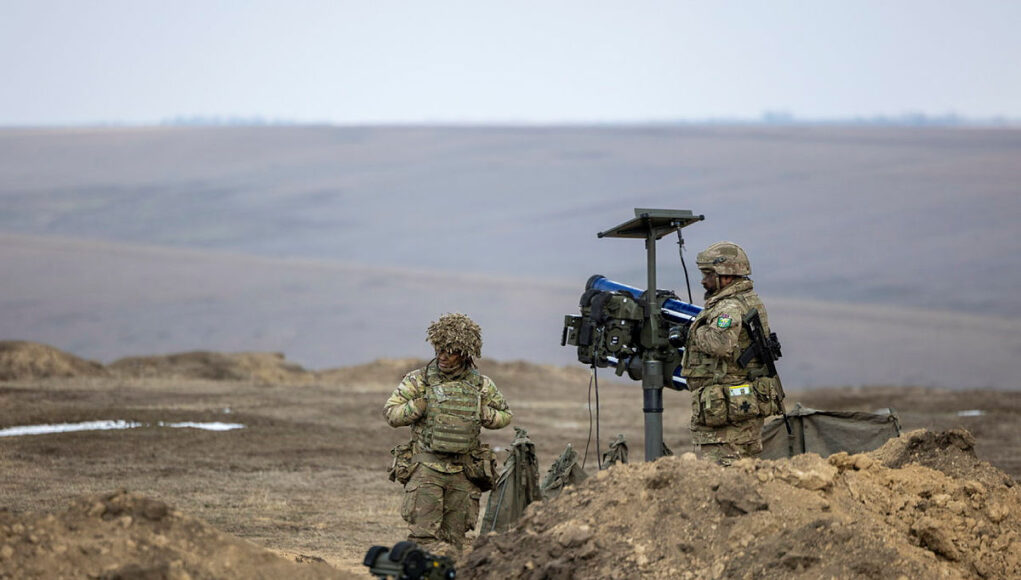


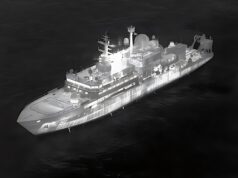
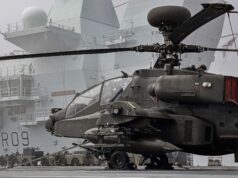
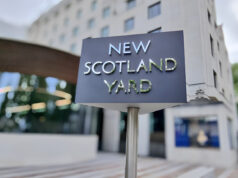


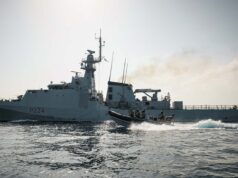
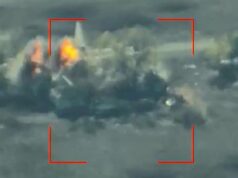

A cheaper option would be AAA guns, guided of course and mobile. In Ukraine the old but great Gepard is doing well. A modern vehicle with modern radar etc would be a great asset. And rounds are much cheaper than missiles.
And yet we still don’t have a ground based long range air defence system like SAMP/T NG, which the war in Ukraine has shown we need
What air defenses. We have never had enough to protect anything for very long.
But I’m sure there’s the usual inadequate solution that will proclaimed world beating while being hugely expensive.
Shame we can buy pantsir
There’s still no suggestion of procuring an air defence system with long-range air defence and short-range anti-ballistic capability, which is a little worrying. Currently, the BA has only Sky Sabre, whose limited range and capability means that a purchase of something with longer reach is necessary.
A limited purchase of SAMP/T-NG would be suitable, given that Aster-30 Block 1 (and hopefully Block 1NT) will be used by the RN. That would give a common pool of interceptors between the two services, and would reduce costs on any orders due to economies of scale. I think maybe 4-8 batteries, combined with increased numbers of Sly Sabre batteries would be effective. Then, air defence in the BA would be layered through Aster-30 for complex threats (ballistic, hypersonic missiles) at long range, CAMM-MR for less complex threats at long range (cruise missiles), CAMM for short range defence and a variety of systems for C-UAS.
Yes, but I think there is still a need for MSI Terrahawk Paladin for defending fixed sites & 30mm Skyranger Boxer for mobile defence. Plus more CAMM/Landceptor (+CAMM-MR when available).
Something missing here?
Where does the medium range bit come from – that isn’t Star Streak and it isn’t really CAMM.
Army wanted something longer range than CAMM maybe this CAMM-MR based with the announced Polish cooperation?
Still no mention of SAMP-T or even CAMM-ER.
Ahhh GBAD reappears. Hopefully they’re looking a bit of ER for the Martlet and Starstreak. Like to see a stripped back SEA Ancilia decoy type launcher with EO and a twin 2×3 stack launchers put on a Paladin platform or wheeled and you could have a 12 shot mini Rapier set-up. Might even work as a naval mount. As someone mentioned before, SailorBoy i think, exploring a 1/2 or shortened CAMM, for out to 10-15km might be useful for a trailer based container Iron Dome type launcher with 15+ shots capacity. Could they evolve the GraveHawk up to 4 missiles? And as many of us here have said here before GBAD is not just the focus for the Army.
“albeit in relatively low numbers.”
That could be said about every single UK procurement. Absolute numbers too.
GRAVEHAWK units as supplied to Ukraine utilising ASRAAM.
Supacat truck, launcher and sensors at less than UKP1M per unit. …. 100 units please
“By June 2027, a further 800 Thales (Belfast) lightweight multi role missiles (LMM) will also be procured.”
Has LMM replaced Starstreak at this point?
So we are getting a good supply of LMM missiles to replace Starstreak. What about the launch vehicle, is it still.meant to be this unarmoured VAMTAC jeep thing? Surely it should be a tracked, armoured vehicle as it has been until now, a replacement for the Stormer? The logical choice would be an Ajax variant.
Other allies are bringing the (Sky Raider?) into service, with a turret offering 40mm cannon.and a LLAD missile launcher, which sounds the ticket to deal with attacking aircraft, helis and drones, maybe missiles too. It sounds like a ready-made solution that could be added to Ajax.
There is very little being said about the progress with.Sky Sabre, other than a vague mention a while back, which was most obfuscation about numbers being ordered and confusing systems with batterys. Do we know what the launch platform for Sky Sabre is?
There is a big information deficit here. We only have 2 air defence regts supporting the army, a medium altitude one which is transitioning from Rapier to Sky Sabre, and a low level one, which is transitioning from Stormer/Starstreak to VAMTAC?/LMM.
It seems to challenge the MOD to state simply what we are getting, in terms of numbers and launch platforms, and when the planned ISD is. You can read that info for any of our NATO allies, but here in the UK it is all a dense fog. With only 2 AD regts, it can hardly be a big war-winning secret.
nice
Google pay 92 every hour my last check was 8400 working 10 hours per week on the web. My more youthful sibling companion has been averaging 18k throughout recent months and he works around 24 hours per week. I cannot accept how simple it was once I attempted it out.This is my main thing……….,.,.,.. WORKSTAR1.COM
Hi Cripes.
Rumours abound of a third AD Regiment forming.
I don’t believe 12 RA is transitioning to VAMTAC RR from Stormer/Starstreak. The small number of VAMTAC Rapid Ranger that were reported of interest to the British Army ( I read 12, and GCS was seen touring the plant ) are to replace 6 Stormer given to Ukraine. A temporary gap filler until a new vehicle arrives, assume a Boxer variant.
This SHORAD capability is reported by the CGS to “triple” so we shall see in the SDR.
Questions about Sky Sabre remain, with reports of as little as 6 launchers to around 24. My own understanding is that each of the 4 Fire Batteries are split into 2 Fire Groups, each with 2 or 3 launchers. So 16 to 24. A System comprises several elements, including a number of launcher vehicles.
This MRAD capability, with 16 RA, is reported by CGS to “double “so again SDR is awaited.
MoD obstruction has been SOP for years, and seems to have got worse with this current government. All smoke and mirrors to hide the collapse of conventional numbers while as you say other nations happily detail equipment purchases.
Agree with Sky Ranger, would be great to see an AA capability beyond a missile back in the Army.
Sky Ranger, not Sky Raider. Rheinmettal, with option for 30, 35 and.maybe 40mm cannon.
As an Island nation, this has got to be prioritised surely?
These air defence systems are to protect the army in the field. Two regiments is not a lot to create an air defence bubble over 3 division, let alone serve 1 division as well.
There do not appear to be any plans as yet to provide air defence of the island. There are no air defence units available to take on UK ground- based air defence (GBAD). It would need a trio of systems to meet the various levels of threat, from drones and helis at the lower end up to hypersonic missiles at the top end. But so far, we have nothing at all, other than the hope that better-armed European allies will shoot down any hostiles before they reach the UK. What could possibly go wrong?!!
The RN has its 6 T45s for air defence, but most of these would be deployed elsewhere in times of threat or conflict. The one or two left in drydock or whatever, might be able to protect Portsmouth or Plymouth but not a lot else.
We are basically critically short of air defence assets, as we are with just about every element of equipment, following the 14 locust years of cuts and gapping.
dpoubt we even have enough aster 30 at that price to even deploy all 6 at once
12 vehicles? I read that’s all we are getting of the vantac with star streak. Pathetic
Elliot, you do realise that this is nothing to do with providing GBAD for key points in the UK homeland? These AD Regts deploy to provide AD for the deployed field army.
Does the military need a cannon based anti drone component? The army should really have a long range/anti ballistic missile system and not rely on the Navy’s overstretched Type 45s (we need 8 Type 83s and we cannot wait!)
Up to now, we have only had a missile to provide low level air defence, in the shape of Starstreak mounted on a Stormer
The thinking now is that it is tens of thousands of pounds cheaper to use a 30 or 35mm cannon against drones and helicopters, leaving the missile to take out aircraft and enemy missiles at medium altitude.
Rather than field two forces, one with cannon, one with.LLAD.missiles, the latest system turrets can do both, with advanced radars, sensors etc to detect and target hostiles at a good distance. The next development will undoubtedly be tha addition of a laser weapon to knock out kamikaze drones at 10p a shot.
Hello??
Hello mate. Everything is being moderated at the mo due to the ongoing issues.
Hi Robert, are you having issues with your posts too?
My harmless post is still in “Park” somewhere. Anyway good to read others comments. A lot of us are saying similar.
Sounds positive.
The question will be what they buy to counter high flying jets and on the other end of the spectrum low flying small drones.
Yes still no talk of buying a long range national defence AAM ideally based on the ASTER 30 Block 1 or 1N/T. Untill we get such a system we cannot defend against challenging threats, we should also up-arm SkySabre with CAAMMS MR. It also concerns me that many of the systems above still use humans to paint the target rather than an automated detection/target/track kill automated system. I feel such a system would be more capable against fast manoeuvring targets. In the Afghan war against the the Soviets we gave the fighters Blowpipe… it was not fire and forget, it sas joystick controlled. As a result it was practicaly useless against fast manoeuvring targets. The US provided Stinger that proved effective. We have to up our game when it comes to air defence. We need a layered defence in depth if we are serious about air defence.
The full spectrum of air defence now includes (as lesson from Ukraine war)
Ability to defeat huge numbers of cheap disposable drones and UAVs up to and including the latest turboprop heavyweight drones- so electromagnetic and jamming weapons, radar guided guns, small cheap close range missile launchers (land ceptor equivalent) LMM is potentially useful when guided onto target by laser and/or infra red tracking.
The latest tests of new novel anti-drone jammers and electromagnetic systems seem very promising and might just be able to resolve the drone issue once and for all….until newer more expensive, less disposable drones are produced that are hardened to counter these systems, which will then mean the drone is costly enough to justify an LMM or Land Ceptor interceptor.
Radar guided guns- we need to see these added to the ORBAT of our armed forces- something like GEPARD or SAABs LOKE system- the LOKE system looks useful as its very compact air portable and offers a modularity that would suit mobile combined arms operations. We have any number of suitable vehicles already in UK ORBAT that would be able to accommodate a LOKE type solution. If LOKE or something similar is used then co-operative engagement with guns and missiles becomes an option.
For high performance- mid to high altitude targets two options- 1) leave them to the air force or 2) SAMP-T- I think a small order of 6 batteries of SAMP-T are likely to be required for UK GBAD and anti-ballistic defence but any additional funding found from shaking the magic money tree could supply a small number of SAMP-T to provide theatre wide air defence for the army.
Perhaps just as pertinent has been a number of publications of Air Commodore Blythe Crawford’s presentation at the Royal United Services Institute conference in London this week. He was the Head of the UK Air Battlespace Training Centre that used the Gladiator simulation system, to do an attack on the UK by Russia, as Ukraine had faced on Day 1 of the invasion on Feb 24th 2022.
Below are some excerpts taken from his presentation that have appeared in recent publications. During the exercise, the UK’s “layered” air defences were breached, as the key result was how easily they were breached.
He is quoted in saying: “We’ve stood for years at the western edge of Europe feeling as though the rest of the continent has stood between us and the enemy,” but “Ukraine has made us all sit up, and that drove some of the work we were doing in the warfare centre to get after how we would solve a problem like that if a similar scenario was pitted against the UK.” Russia pummelled Ukraine with missiles during the opening salvo of its full-scale invasion.
The UK has improved its air defences since 2022 (e.g. introduction of Sky Sabre) and uses an approach that integrates aircraft, ships, and land-based systems — a network critical to defeating any attempt to land invasion forces in the UK. There are also notable differences between how Russia attacked Ukraine and how it might challenge the UK’s air defences, and — given that ground-launched missiles would need to pass through European airspace — if Russia were to attack the UK, it might opt to mobilize its Northern Fleet and launch an attack from the Atlantic.
Crawford also said that “over the last three years, the scenario has become much more complex, in terms of the types of systems that we need to be able to counter, but then also the mass as well.” “When you see swarms of hundreds of drones now operating in Ukraine, some of them decoys, some of them with munitions on board, the challenge is how do you tackle them all, or do you tackle them all?” he added. “That is a challenge we have right across the West.”
Crawford described Ukraine as a wake-up call, “where you have two countries with very capable integrated air defence systems going head-to-head, with neither side really achieving any form of air superiority, which has been a cornerstone of air operations for decades.” He added that this had been made more complex by the rise of drones and autonomy, with the possibility of “swarms of several hundred munitions — not just drones but combined with rockets and ICBMs, at all levels and in all spheres.”
The concept of air superiority has significantly changed, he said. “We tended to think of it as theatre-wide and something you achieved over time. Now we see air superiority being from trench to trench and from 0 to 50 feet, rather than necessarily being something that’s done right across the theatre.”
While the attack on the UK that Crawford described was just a simulation, he said Western countries needed to learn from what was happening in Ukraine and couldn’t assume their home bases were safe. “We in the UK over the last few decades have become focused on being garrison safe and making assumptions that we are safe to operate from the home base because most of the wars we’ve been fighting have been overseas,” he said. “We need to reverse that thinking and assume that from here on, we’re under threat in the home base now as well.”
“The UK stands fully prepared to defend itself against any threat alongside our NATO allies,” a spokesperson for the UK’s Ministry of Defence said. “Our military is equipped with a range of advanced capabilities to provide a layered approach to air and missile defence. This includes the world-class Sea Viper missile system, which has successfully shot down a Houthi rebel ballistic missile and attack drones in the Red Sea.”
If we look at the MOD’s statement above on the state of our air defences. It is very clear they are glossing over our capabilities. As when you take a longer look at what we have, you quickly find areas that are missing any capability or areas that have partial capability. For example: The Typhoon and Meteor combination is very good against cruise missile, as is the F35/AMRAAM combination. But to give them the best chance of downing cruise missiles at a distance from our shores, you require an effective airborne early warning (AEW) platform. Something we are having a capability holiday with, until the Wedgetails arrive. However, with only three aircraft, they cannot cover the whole area around the UK 24/7. This would significantly be worse if one of the aircraft was either in maintenance or deployed overseas. The other issue with both Typhoon and F35 is that our Typhoons operate from two bases in the UK, whilst the F35 operates from one. All three of these bases would be targeted on Day 1 of a strike. This gets worse, as lot of these aircraft are stored in large unprotected hangars, rather than hardened aircraft shelters (HAS). Meaning a strike on a hangar has a very good chance of taking out multiple aircraft. With just over 100 Typhoons and 38ish F35s. We could find ourselves with a seriously depleted fleet following an attack!
Our next line of defence would be the six T45 destroyers armed with Sea Viper. Sea viper is currently at the start of the phase 1 of Sea Viper Evolution, a modification program to bring the Block 0 missiles up to the Block 1 standard. Later, phase 2 will introduce the Block 1NT missile. This will give the ship a significantly better capability at dealing with ballistic missile threats. However, these ships will either be docked at Portsmouth, undergoing modifications or deployed overseas. It will be very unlikely that they will be used to sail around the UK, to provide theatre level air defence. Also without support from an AEW aircraft, they won’t be able to use Sea Viper against cruise missiles, until they are detected by the ship’s radar. So the protection they can provide is quite localised.
The next line of defence, would be the Royal Artillery’s (RA’s) Sky Sabre. However, this only provides local air defence and has as yet to publicly be signed off against ballistic threats. There is an aspiration to make Sky Sabre a theatre system (100km+ range) by introducing CAMM-ER and CAMM-MR. But to do that the current Giraffe GMB radar will need seriously upgrading. The other fly in the ointment is that the Army’s Sky Sabre is scaled for deployed operations in support of the Army, not for protecting airbases.
The final lines of defence would be the RA’s Starstreak/Martlet units, perhaps with handheld counter unmanned air system (C-UAS) weapons. Neither of which will really be of any use against a cruise missile or a ballistic missile. Though it would technically be feasible to intercept a cruise missile with Starstreak.
From the above my conclusions are:
1. We don’t have any/enough AEW aircraft. With 5 MESA radars bought, there should be a minimum of 5 Wedgetail aircraft brought in to service,
which should be supplemented by medium altitude long endurance (MALE) AEW drones
2. Our Typhoon and F35s must be parked in HAS. As this will better protect aircraft from near miss strikes and prevent multiple aircraft from being
damaged in a single strike.
3. As good as the T45 is, it cannot be in two places at once. The UK requires a land based “Sea Viper” (e.g. SAMP/T) option to protect main land
bases and infrastructure, primarily from ballistic threats.
4. More Sky Sabre units are required with the suggested upgrades, where the RAF Regiment is given some to protect airbases. Especially as there’s
only 6 main operating bases in the UK now. Not sure who should provide cover for the two main FAA bases, plus Faslane and Rosyth would also need
protecting? The directed microwave weapon should also be quickly introduced to both the RA and RN, to deal with drone/drone swarms when
deployed overseas.
5. The RAF Regiment needs a mobile system that can provide SHORAD via missile as well an autocannon, backed up with the directed microwave
weapon to deal with drones and drone swarms.
Concur.
The HAS issue is annoying, there are plenty still around.
Do such structures need an overhaul, for example do their CBRN features degrade?
For 4. Can we add Portsmouth and Devonport? If not permanent something that could be readily deployed. The ships are all nicely parked there like sitting ducks. Maybe a RN Regiment? And Barrow?
Vital kit. But we need GBAD for the UK itself for when ballistic, Hypersonic & cruise missiles target our vital infrastructure & military bases.
Does anyone consider that the army needs a system that is the equivalent of Patriot?
There’s still no suggestion of procuring an air defence system with long-range air defence and short-range anti-ballistic capability, which is a little worrying. Currently, the BA has only Sky Sabre, whose limited range and capability means that a purchase of something with longer reach is necessary.
A limited purchase of SAMP/T-NG would be suitable, given that Aster-30 Block 1 (and hopefully Block 1NT) will be used by the RN. That would give a common pool of interceptors between the two services, and would reduce costs on any orders due to economies of scale. I think maybe 4-8 batteries, combined with increased numbers of Sly Sabre batteries would be effective. Then, air defence in the BA would be layered through Aster-30 for complex threats (ballistic, hypersonic missiles) at long range, CAMM-MR for less complex threats at long range (cruise missiles), CAMM for short range defence and a variety of systems for C-UAS.